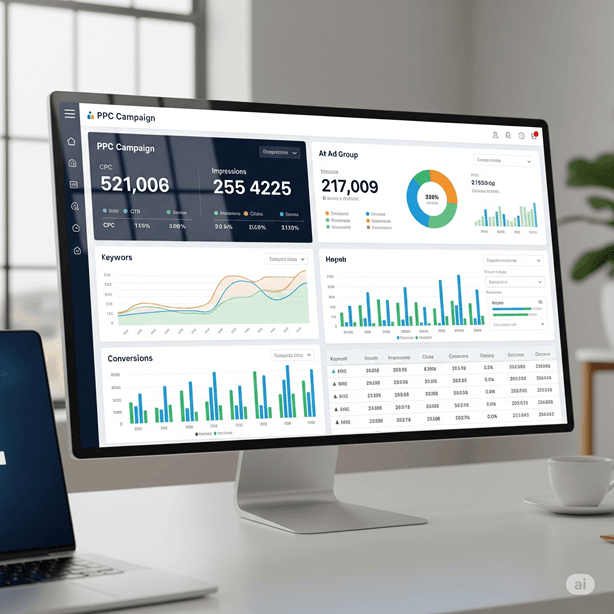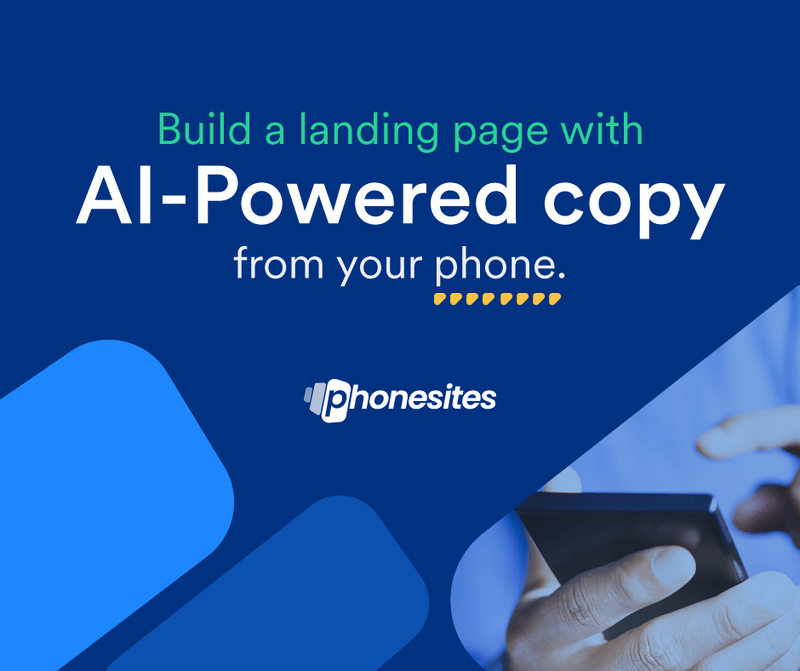
Have you ever wondered why some real estate agents seem to sell homes effortlessly while others struggle for months? The secret often lies in their digital marketing strategy, particularly their mastery of pay-per-click (PPC) advertising. In today’s competitive real estate market, traditional marketing methods alone won’t cut it. You need a strategic approach that puts your properties directly in front of motivated buyers at the exact moment they’re searching.
Creating effective PPC ads for real estate isn’t just about throwing money at Google or Facebook and hoping for the best. It’s about understanding buyer psychology, crafting compelling messages, and optimizing every element of your campaign to drive qualified leads that convert into actual sales. Think of PPC advertising as your digital sales assistant working around the clock, presenting your properties to the right people at the right time.
Understanding PPC Advertising in Real Estate
What Are PPC Ads and Why They Matter for Real Estate
Pay-per-click advertising represents a fundamental shift in how real estate professionals connect with potential buyers. Unlike traditional advertising where you pay upfront regardless of results, PPC ensures you only invest when someone actively engages with your content. This performance-based model makes it particularly attractive for real estate professionals who need to demonstrate clear return on investment.
The real estate market operates on emotion and timing. When someone decides to buy a home, they often want to move quickly. PPC advertising capitalizes on this urgency by placing your properties directly in search results when buyers are actively looking. It’s like having a billboard that only appears when someone is driving to look at houses in your area.
Consider this scenario: a family decides they need to relocate for a job opportunity. They have maybe sixty days to find and close on a home. They’re not going to wait for your newspaper ad to run next Sunday or hope to stumble across your yard sign. They’re going straight to their phone or computer to search for homes in their new city. Your PPC ad needs to be there waiting for them.
The Psychology Behind Fast Home Sales Through Digital Marketing
Understanding buyer psychology forms the foundation of successful real estate PPC campaigns. Modern home buyers don’t just want information about properties; they want to envision their future life in those spaces. Your PPC ads need to tap into these emotional triggers while providing the practical information buyers need to take action.
The concept of scarcity plays a crucial role in real estate psychology. When buyers see phrases like “just listed,” “price reduced,” or “motivated seller,” they understand that good opportunities don’t last long in competitive markets. However, you must balance urgency with authenticity. Artificial scarcity tactics can backfire if buyers feel manipulated rather than informed.
Trust building becomes even more critical in digital environments where buyers can’t physically shake your hand or walk through properties with you initially. Your PPC ads serve as the first impression, and you need to establish credibility immediately. This means highlighting your experience, showcasing testimonials, and providing transparent information about properties and your services.
Setting Up Your Foundation for Success
Choosing the Right PPC Platforms for Real Estate
The platform selection process requires careful consideration of where your ideal buyers spend their time online. Google Ads remains the powerhouse for real estate PPC because it captures intent-driven searches. When someone types “homes for sale near me” or “three bedroom house downtown,” they’re expressing clear buying intent that Google Ads can capitalize on immediately.
Facebook and Instagram ads excel at creating awareness and desire, particularly for higher-end properties or unique homes that benefit from visual storytelling. These platforms allow you to showcase lifestyle elements that text-based Google ads simply cannot convey. You can target users based on life events like job changes, relationship status updates, or recent moves that indicate potential home buying intent.
LinkedIn presents opportunities for targeting professionals who might be relocating for career advancement or seeking investment properties. While it typically generates fewer leads than Google or Facebook, the quality of LinkedIn leads often compensates for the lower volume, particularly for luxury properties or commercial real estate.
Budget Planning and ROI Expectations
Successful real estate PPC campaigns require strategic budget allocation that accounts for the high-value nature of property transactions. Unlike businesses selling twenty-dollar products, real estate professionals are working with transactions worth hundreds of thousands of dollars, which justifies higher cost-per-click investments when they generate qualified leads.
Start by calculating your average commission per sale and working backward to determine acceptable cost-per-acquisition numbers. If your average commission is ten thousand dollars, spending five hundred dollars to acquire a qualified buyer represents a 95% profit margin, which most businesses would consider exceptional. This perspective helps you compete effectively in competitive keyword auctions without feeling constrained by seemingly high click costs.
Google Ads vs Facebook Ads for Real Estate
Google Ads and Facebook Ads serve different purposes in your real estate marketing ecosystem, much like a fishing net and a fishing rod serve different purposes for a fisherman. Google Ads acts like a net, capturing everyone who’s actively searching for homes in your area. Facebook Ads function more like a targeted fishing rod, allowing you to cast your line toward specific demographics and interests.
Google Ads typically generate higher intent leads because users are actively searching for real estate services. However, Facebook Ads often provide better cost efficiency for brand building and nurturing potential buyers who aren’t quite ready to purchase immediately. The most successful real estate professionals use both platforms strategically rather than choosing one over the other.
Bing Ads and Other Emerging Platforms
While Google dominates search traffic, Bing Ads shouldn’t be overlooked, particularly for reaching older demographics who often have higher purchasing power for real estate. Bing users tend to be slightly older and more affluent than the average Google user, characteristics that align well with serious home buyers rather than casual browsers.
YouTube advertising represents an emerging opportunity for real estate professionals willing to invest in video content creation. Property tours, neighborhood guides, and market update videos can establish you as the local real estate authority while generating leads from engaged viewers.
Keyword Research and Targeting Strategies
High-Converting Keywords for Real Estate PPC
Effective keyword research for real estate requires understanding the buyer’s journey from initial awareness through final purchase decision. Early-stage buyers might search for general terms like “best neighborhoods in [city]” or “should I buy or rent,” while later-stage buyers use specific terms like “three bedroom homes under 400k” or “houses for sale on elm street.”
Focus on keywords that indicate immediate buying intent rather than general information gathering. Terms like “homes for sale,” “real estate agent near me,” “houses under [price],” and “move-in ready homes” typically convert better than educational keywords like “how to buy a house” or “mortgage rates explained.” However, don’t completely ignore educational keywords, as they can be valuable for building awareness and nurturing future buyers.
Location-specific keywords often provide the best return on investment for real estate professionals. Someone searching for “homes for sale in downtown Springfield” is much more likely to convert than someone searching for generic “real estate” terms. Build comprehensive keyword lists that include neighborhood names, school districts, zip codes, and local landmarks that buyers might reference in their searches.
Local SEO Integration with PPC Campaigns
Integrating local SEO principles into your PPC campaigns creates synergy between your paid and organic marketing efforts. Use the same location-based keywords in both your PPC ads and your website content to reinforce your local authority. This consistency helps Google understand your geographic focus and can improve your organic rankings over time.
Google My Business optimization becomes crucial when running local PPC campaigns. Ensure your business listing includes accurate information, recent photos, and positive reviews. When people click on your PPC ads and then search for your business name, a well-optimized Google My Business profile provides additional credibility and contact options.
Long-tail Keywords That Drive Qualified Leads
Long-tail keywords represent some of the most valuable opportunities in real estate PPC advertising. While “homes for sale” might generate thousands of searches per month, “waterfront homes for sale under 500k in lake district” generates fewer searches but attracts highly qualified buyers with specific requirements and budget parameters already defined.
These longer, more specific keyword phrases typically cost less per click because fewer advertisers compete for them, yet they often convert at higher rates because they attract buyers with clear intent and requirements. Build extensive long-tail keyword lists by combining property features, price ranges, locations, and buyer motivations.
Crafting Compelling Ad Copy That Converts
Headlines That Grab Attention Instantly
Your headline serves as the digital equivalent of a compelling yard sign that makes drivers slam on their brakes. In the split second someone sees your ad, your headline must communicate value, create urgency, or trigger an emotional response that compels them to click rather than scroll past.
Effective real estate headlines often combine specific benefits with emotional triggers. Instead of generic phrases like “Beautiful Homes Available,” try “Move-In Ready Dream Home – No Repairs Needed” or “Priced $20K Below Market – Won’t Last Long.” These headlines provide specific value propositions while creating urgency that motivates immediate action.
Numbers and specific details make headlines more credible and attention-grabbing. “3BR/2BA Updated Kitchen $299K” provides more useful information than “Affordable Family Home” and helps qualify prospects before they click. This pre-qualification reduces wasted clicks from unqualified browsers while attracting serious buyers who match your property’s specifications.
Description Lines That Build Urgency and Trust
Your ad description lines must accomplish multiple objectives within limited character counts. They need to provide additional property details, establish your credibility as an agent, create urgency without seeming pushy, and include a compelling call-to-action that motivates clicks.
Social proof elements work particularly well in real estate ad descriptions. Phrases like “Sold 47 Homes This Year” or “Average Sale in 18 Days” provide credibility while implying that you can deliver similar results for potential clients. However, ensure any claims you make are accurate and verifiable, as false advertising in real estate can have serious legal consequences.
Call-to-Action Phrases That Drive Action
Strong call-to-action phrases guide prospects toward the next logical step in their buying journey. Generic phrases like “Click Here” or “Learn More” miss opportunities to create excitement and urgency. Instead, use action-oriented phrases that highlight the benefit of clicking, such as “Schedule Your Private Tour Today” or “See All 47 Photos Now.”
Consider the psychological difference between “Contact Us” and “Get Your Free Market Analysis.” The first phrase requires prospects to initiate a potentially uncomfortable sales conversation, while the second offers valuable information in exchange for contact details. This subtle shift in language can dramatically improve click-through rates and lead quality.
Visual Elements That Make Homes Irresistible
Photography Best Practices for PPC Ads
Photography can make or break your real estate PPC campaigns because it often determines whether someone clicks on your ad or scrolls past it. The thumbnail image in your ad serves as a preview of the property experience, and it needs to create immediate desire while accurately representing what buyers will find when they visit.
Lighting plays a crucial role in real estate photography for PPC ads. Natural light makes spaces appear larger and more inviting, while harsh artificial lighting can make even beautiful homes look unappealing. Schedule photo shoots during optimal lighting conditions, typically mid-morning when natural light fills rooms without creating harsh shadows.
Staging elements should enhance the property’s best features rather than distract from them. Remove personal items, declutter spaces, and add subtle touches that help buyers envision themselves living in the space. However, avoid over-staging that makes the property look unrealistic or unattainable for your target buyer demographic.
Video Content That Showcases Property Features
Video content provides opportunities to showcase properties in ways that static images simply cannot match. A well-crafted property video can demonstrate flow between rooms, highlight unique architectural features, and provide context about neighborhood amenities that photos alone cannot convey effectively.
Keep PPC videos concise and engaging, typically between 30-60 seconds for optimal performance. Start with an exterior shot that establishes curb appeal, then move through the most impressive interior spaces. End with a compelling call-to-action that directs viewers to schedule a showing or request more information.
Virtual Tours and Interactive Elements
Virtual tours have evolved from nice-to-have features to essential tools for serious real estate marketing. Modern buyers often want to explore properties virtually before investing time in physical showings, particularly if they’re relocating from other cities or have busy schedules that make spontaneous showings difficult.
Interactive elements like floor plan overlays, measurement tools, and 360-degree views keep prospects engaged longer and provide more comprehensive information than traditional photo galleries. Longer engagement times often correlate with higher conversion rates because engaged prospects develop stronger emotional connections to properties.
Landing Page Optimization for Maximum Conversions
Essential Elements of High-Converting Real Estate Landing Pages
Your PPC ads are only as effective as the landing pages they direct traffic toward. A compelling ad that leads to a poorly designed landing page wastes your advertising investment and frustrates potential buyers who clicked expecting a seamless experience. Your landing page must deliver on the promises made in your ad while guiding visitors toward the next step in their buying journey.
Load speed becomes critical for real estate landing pages because buyers often browse properties on mobile devices during brief moments throughout their day. A page that takes more than three seconds to load will lose potential buyers before they even see your property photos. Optimize images for web use and minimize unnecessary elements that slow page performance.
Contact forms should be strategically placed and optimized for conversions. Rather than asking for extensive information upfront, request only essential details like name, phone number, and email address. You can gather additional qualification information during follow-up conversations once you’ve established initial contact and built rapport with prospects.
Mobile Optimization for Home Buyers on the Go
Mobile optimization extends beyond simply making your landing page viewable on smaller screens. Mobile users behave differently than desktop users, often browsing during brief moments between other activities. Your mobile landing pages must provide essential information quickly and make it effortless for users to take action.
Click-to-call functionality becomes essential for mobile landing pages because many mobile users prefer phone conversations over form submissions. Include prominent phone numbers that initiate calls with a single tap, and consider adding text messaging options for prospects who prefer written communication.
Advanced Targeting Techniques
Demographic and Geographic Targeting
Advanced targeting capabilities allow you to reach prospects based on characteristics that indicate home buying likelihood. Age demographics often correlate with buying patterns, as first-time buyers, growing families, and empty nesters typically search for different property types and have varying timeline expectations.
Income targeting helps ensure your ads reach prospects who can realistically afford the properties you’re marketing. While this information isn’t always perfectly accurate, it provides general guidance for budget allocation and helps reduce unqualified leads from prospects whose financial situations don’t align with your property price ranges.
Behavioral Targeting and Remarketing Strategies
Behavioral targeting leverages data about users’ online activities to identify prospects who demonstrate home buying intent through their browsing patterns. Someone who frequently visits real estate websites, mortgage calculators, and moving company sites likely has higher buying intent than casual browsers who occasionally view property listings.
Remarketing campaigns allow you to reconnect with prospects who visited your website or engaged with your ads but didn’t convert initially. These campaigns often generate higher conversion rates at lower costs because they target warm prospects who already demonstrated interest in your services or properties.
Lookalike Audiences for Real Estate
Lookalike audiences help you find new prospects who share characteristics with your best existing clients. Platform algorithms analyze your customer data to identify patterns and locate similar users who haven’t yet engaged with your business but match the profile of successful buyers.
Create lookalike audiences based on recent buyers rather than all past clients, as recent buyers reflect current market conditions and preferences. Market dynamics change over time, and audience preferences from five years ago might not accurately represent today’s buyers.
Measuring Success and Optimizing Performance
Key Metrics to Track for Real Estate PPC
Measuring PPC success in real estate requires understanding which metrics actually correlate with business results rather than getting distracted by vanity metrics that look impressive but don’t impact your bottom line. Click-through rates matter, but conversion rates matter more. Cost-per-click is important, but cost-per-qualified-lead provides better insights into campaign profitability.
Track the entire buyer journey from initial ad click through final closing to understand which campaigns generate not just leads, but actual sales. Some campaigns might generate numerous leads that never convert, while others produce fewer leads but higher closing rates. This long-term perspective helps you allocate budget toward campaigns that generate actual business results.
Lead quality metrics help distinguish between prospects who are genuinely ready to buy and those who are casually browsing. Track metrics like response time to follow-up attempts, qualification rates, and progression through your sales funnel to identify which campaigns attract serious buyers versus information gatherers.
A/B Testing Strategies for Continuous Improvement
A/B testing in real estate PPC requires patience because sales cycles extend over weeks or months rather than minutes or hours. Test one element at a time to isolate variables and understand what drives performance improvements. Common testing opportunities include headlines, descriptions, call-to-action phrases, landing page layouts, and contact form designs.
Test elements that could significantly impact conversion rates rather than minor details that are unlikely to influence buyer behavior. Testing button colors might generate interesting data, but testing value propositions or offer structures typically produces more meaningful improvements in campaign performance.
Document testing results and apply successful insights across multiple campaigns rather than limiting improvements to individual tests. If you discover that urgency-focused headlines outperform feature-focused headlines, apply this insight to future campaigns and continuously refine your messaging approach.
READ ALSO: Steps to Find Your Target Audience Easily and Fast
Conclusion
Creating PPC ads that sell homes fast requires a strategic combination of technical expertise, market knowledge, and psychological understanding of buyer behavior. Success comes from treating PPC advertising as a comprehensive system rather than isolated campaigns, where keyword research, ad copy, landing pages, and follow-up processes work together to guide prospects from initial awareness through final purchase.
The real estate market will continue evolving, and your PPC strategies must adapt accordingly. Stay informed about platform updates, emerging technologies, and changing buyer preferences. Most importantly, maintain focus on generating qualified leads and actual sales rather than pursuing metrics that look impressive but don’t contribute to your business growth.
Remember that PPC advertising is a marathon rather than a sprint. Consistent optimization, ongoing testing, and patient refinement typically produce better long-term results than dramatic strategy overhauls every few months. Build sustainable systems that generate predictable lead flow, and your real estate business will thrive regardless of market fluctuations.
READ ALSO: Become a Top Freelance Digital Marketer in Easy Steps









Leave a Comment
You must be logged in to post a comment